What's New
Displaying results 2971 - 2980 of 4052
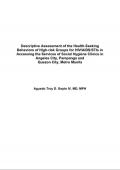
Resource | Publications,
In recent years, there has been a dramatic increase in new cases of HIV/AIDS as reported by the Department of Health (DOH). As of the latest HIV/AIDS Surveillance Report from the Philippine HIV and AIDS Registry of the National Epidemiology Center of the DOH, the surge in the number of cases of HIV for the month of November 2011 alone is 89% higher compared to the same period from the previous year. In the same report, from January to November 2011, 96% of 2081 newly diagnosed cases were infected through sexual contact with a majority of male cases (1,859 males and 133 females infected through sexual transmission).
Resource | Presentations,
Browse and view tables, charts and graphs illustrating data on HIV prevalence and epidemiology, risk behaviors, vulnerability and HIV knowledge, HIV expenditures, and national responses in the Pacific Island Countries and Territories (PICT).

Resource | Publications,
This is the fifth round of the Integrated Biological and Behavioral Surveillance Survey (IBBS) conducted among Female Sex Workers (FSWs) of 22 Terai Highway Districts. This was a cross-sectional survey in which a total of 610 Female Sex Workers (FSWs) were recruited; out of the total respondents, 400 were recruited from 16 districts domain, and remaining 210 were recruited from 16 districts domain.

Resource | Publications,
This fourth round of IBBS survey recruited 400 men who have sex with men (MSM) and transgender people (TG) in Kathmandu Valley (Kathmandu, Lalitpur, and Bhaktapur). The respondent-driven sampling (RDS) methodology was adopted to recruit the possible survey participants. This survey was carried out primarily to determine) among MSM in the Kathmandu Valley and to assess their HIV/STI-related risk behaviors, including their sexual practices. The survey also aimed to measure their exposure to the intervention programs targeted at MSM/TG in the valley. At the same time, it has sought to analyze trends through the comparison of data on selected variables obtained from first, second, third and fourth rounds of the IBBS.
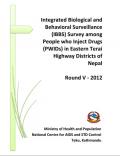
Resource | Publications,
The fifth round of IBBS among 360 male People Who Inject Drugs (PWID) in three Eastern Terai districts (Jhapa, Morang, and Sunsari) was conducted by the NCASC with financial support from the Global Fund. This survey primarily collected strategic information needed to analyze the trends in risk behaviors associated with HIV/STI infection among PWID.

Resource | Publications,
The Bureau of Epidemiology has conducted HIV surveillance among direct and indirect sex workers since 1989 to monitor and control the HIV epidemic. This has empowered sex workers and enabled them to negotiate for safer sex and condom use, leading to proactive service delivery and consistent access to STI services.
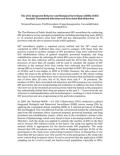
Resource | Publications,
HIV surveillance applies a repeated survey method, and the 28th round was conducted in 2010. Collected data were used to compare with those from the previous rounds to monitor changes of HIV prevalence. Data were collected from IDU rehabilitation clinics of general hospitals, provincial hospitals, and drug rehabilitation centers by collecting all visited IDU cases in June. If the sample size is less than 10, data collection will be extended until the 15th of July. Data from the provinces of more than 20 samples will be used to calculate the median of HIV infection at the national level.
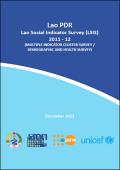
Resource | Publications,
The Lao Social Indicator Survey (LSIS) is a nationally representative sample survey. Its field data collection was conducted from October 2011 to February 2012. Among the 18,843 successfully interviewed nationally in the survey, 97,421 household members were listed. Of these, 47,820 were male and 49,601 were female. The average household size found in the survey was 5.2.
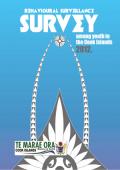
Resource | Publications,
In 2012, a behavioural survey among youth was conducted. Its aims were to assess the knowledge, attitudes and risk behaviours among youth in order to better identify how to deliver targeted interventions aiming to reduce risk of HIV and STI infections. 674 youth were recruited from various islands in the Cook Islands.
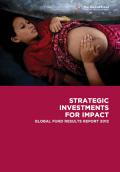
Resource | Publications,
The Global Fund Results Report 2012 presents the latest data from recipients of Global Fund grants in 151 countries – as well as the latest evidence of impact on the HIV, tuberculosis (TB) and malaria pandemics, and the most up-to-date information on Global Fund financing. It highlights the continued progress and the scale-up achieved by low- and middle-income countries around the world, made possible by the collaboration and efforts of hundreds of governments, donors, recipients, technical agencies, private companies and civil society organizations.





